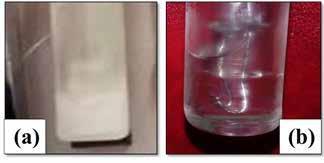
Lithium-ion batteries powers the operation of almost all electronic gadgets are known for their energy density. They are in constant need to power all electronic devices at various operating conditions. The most important limitation of these commercial lithium-ion batteries is their operating temperature range. They cannot be operated at extreme temperatures (not less than 10 o C and not higher than 60 o C).In such cases, constant research was on electrolyte formulations which can stay as a liquid at sub-zero temperatures. Earlier research reports the addition of a variety of organic solvents to the conventional battery electrolytes in order to prevent the freezing of the electrolyte.Our research finding for operating lithium-ion batteries at sub-zero temperatures involves the design of simple hybrid electrolyte (HE) composition by using room temperature ionic liquids (RTILs). RTILs are basically salts which melt below room temperatures. They are less volatile and are known for their thermal stability. Fig. 1 shows the naked eye of HE at -40 o C which is compared with the conventional electrolyte. The figure clearly explains that HE remains as a liquid at sub-zero temperatures. Hence, the HE design can help lithium-ion batteries to operate from sub-zero temperatures to above room temperatures (30 o C to 60 o C).The advantage of this research finding lies in the simplicity of the composition which can be prepared easily for bulk requirements. Further, it was reported through our recent publications that the added ionic liquid will not createany undesired effect to the performance of lithium-ion. Fig. 2 explains the bar diagram which compares the performances of batteries cycled at various temperatures using HE. Since Lithium-ion batteries dominate the world, we believe that this research finding can attract Indian as well as international market to power the electronics at low temperature.
Prof. Sagar Mitra
